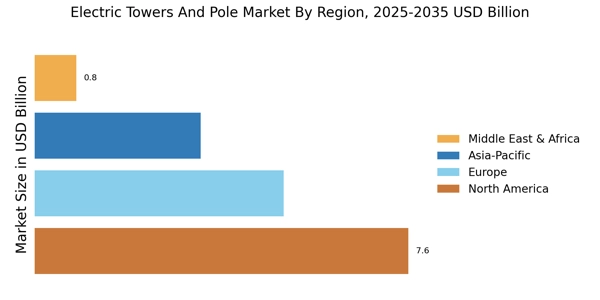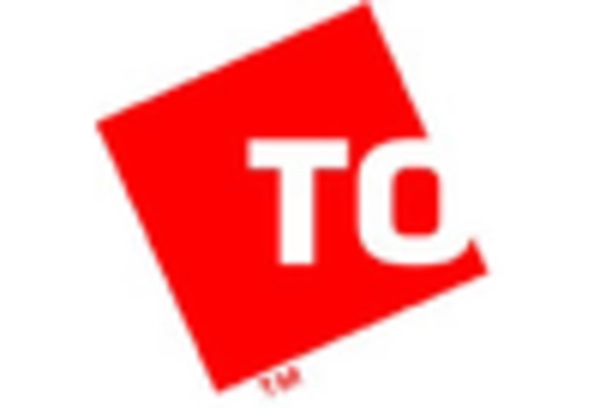Regulatory Support and Investment
The Electric Towers And Pole Market benefits from robust regulatory support and investment initiatives aimed at enhancing energy infrastructure. Governments worldwide are implementing policies that promote the modernization of electric grids, which includes the construction and upgrading of electric towers and poles. For instance, recent legislation in various regions has allocated substantial funding for infrastructure projects, with estimates suggesting that public and private investments could exceed 500 billion dollars over the next decade. This regulatory environment fosters growth in the electric towers and poles sector, as companies seek to capitalize on available funding and align with governmental energy goals.
Shift Towards Renewable Energy Sources
The Electric Towers And Pole Market is significantly influenced by the global shift towards renewable energy sources. As countries strive to reduce carbon emissions, there is an increasing demand for infrastructure that supports wind, solar, and hydroelectric power generation. This transition necessitates the installation of new electric towers and poles designed to accommodate renewable energy systems. Market data suggests that investments in renewable energy infrastructure are expected to reach approximately 1 trillion dollars by 2027. This trend not only drives the demand for electric towers and poles but also encourages innovation in design and materials to support sustainable energy solutions.
Increased Energy Demand and Electrification
The Electric Towers And Pole Market is experiencing heightened demand due to increased energy consumption and the ongoing electrification of various sectors. As economies grow and technological advancements proliferate, the need for reliable electricity supply becomes paramount. This trend is particularly pronounced in emerging markets, where energy demand is expected to rise by 50% over the next decade. The electrification of transportation, heating, and industrial processes further exacerbates this demand, necessitating the expansion and enhancement of electric towers and poles. This scenario presents a compelling opportunity for stakeholders in the electric towers and poles market to innovate and expand their offerings.
Urbanization and Infrastructure Development
The Electric Towers And Pole Market is also driven by rapid urbanization and infrastructure development. As urban areas expand, the demand for reliable electricity supply increases, necessitating the installation of new electric towers and poles. This trend is particularly evident in developing regions, where urban populations are projected to grow significantly in the coming years. Market analysis indicates that the demand for electric infrastructure in urban settings could rise by 30% by 2030. Consequently, this urban expansion presents opportunities for manufacturers and service providers within the electric towers and poles sector to meet the growing needs of urban populations.
Technological Advancements in Electric Towers and Poles
The Electric Towers And Pole Market is experiencing a notable transformation due to rapid technological advancements. Innovations in materials, such as composite and high-strength steel, enhance the durability and efficiency of electric towers and poles. Furthermore, the integration of smart grid technologies is revolutionizing the way electricity is transmitted and managed. These advancements not only improve operational efficiency but also reduce maintenance costs. According to recent data, the adoption of smart technologies in the electric infrastructure is projected to increase by 25% over the next five years. This shift indicates a growing recognition of the importance of modernizing electric towers and poles to meet future energy demands.



















Leave a Comment